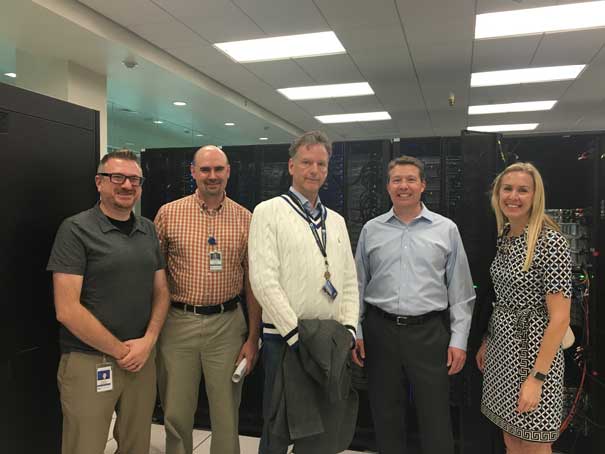Since our Series B funding round closed last July, we’ve been adding new critical team members to our staff each week. Yesterday, our CEO Ward Thomas took our new Vice President of Supplier Network, Karen Hannum, and our Chief Financial Officer, Brendan Harrington, to the Center for Computational Research to see where our materials-based models are simulated.
The Center for Computational Research, owned by the University at Buffalo, houses 16,000 microprocessors to simulate data in a highly secure environment. Sentient Science is one of four companies in Buffalo to use the Center’s industrial cluster to simulate and run jobs.
The center makes resources available to us for scientific computing/modeling, data analytics, machine learning and software engineering, and is home to 72 terabytes of capacity. With more than 10% of the world’s fielded wind turbines under contract, we, by far, use the most space on the industrial cluster.
A separate area within the Center is dedicated for bioinformatics research and medical records from the Buffalo Niagara Medical Campus. The bioinformatics resources run analysis on DNA and protein sequencing, gene expression, biological pathway, statistical computing and inferring phylogenics.
Last October, Gov. Andrew Cuomo announced $100 million for the genomics medicine initiative, which partners with UB and the New York Genome Center in Manhattan to translate research advances in the field into clinical care. The tools available through the Buffalo Institute for Genomics and Data Analytics enable researchers and companies to sift through, query and analyze enormous amounts of digital information.
So, while the bioinformatics cluster is busy decoding the human genome, we’re doing similar data ingestion and analysis on the industrial cluster to decode the materials genome to predict when cracks initiate in the microstructure of bearing and gear materials.
It’s pretty incredible to think that Buffalo, NY is breaking medical and mechanical barriers through high performance computing and molecular simulations.
